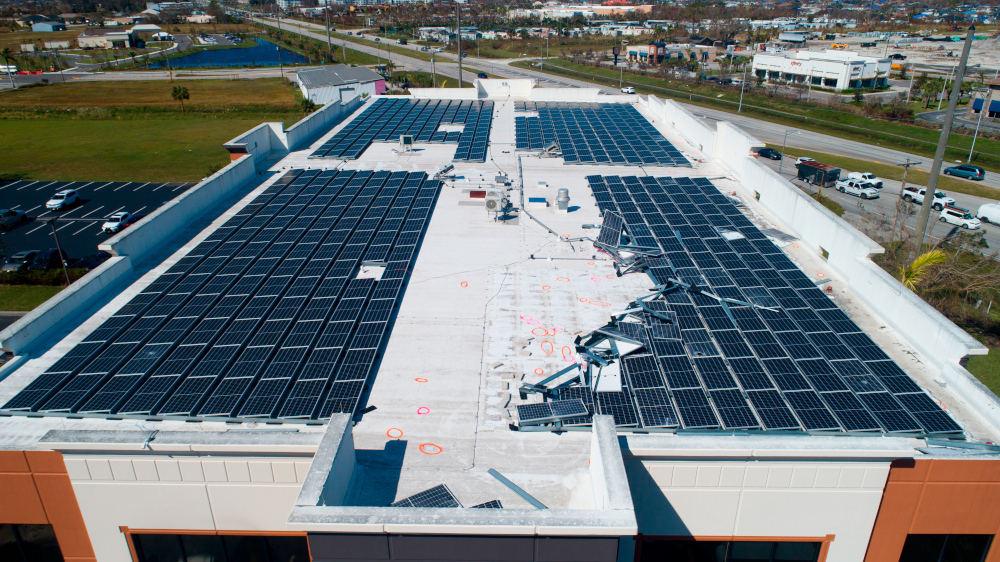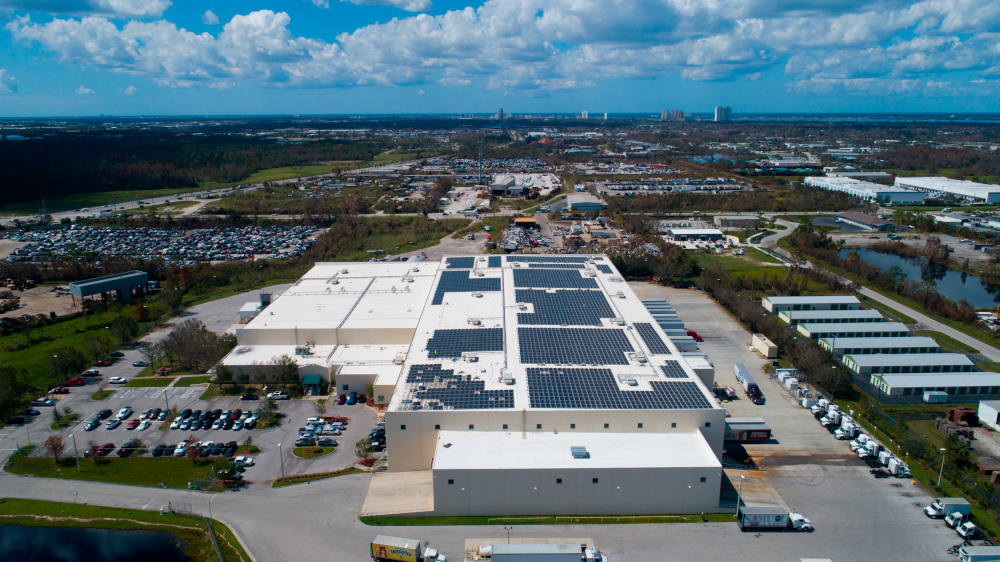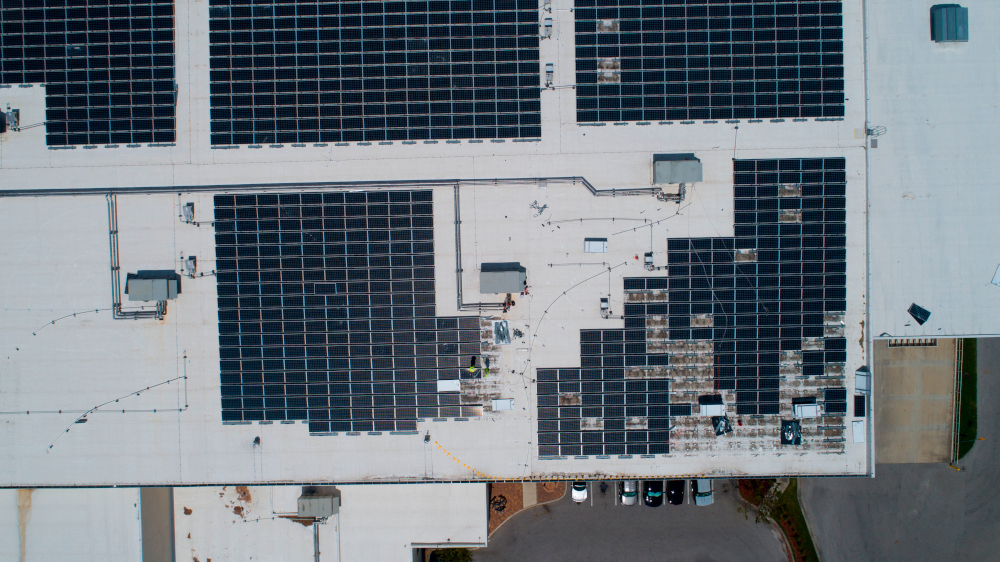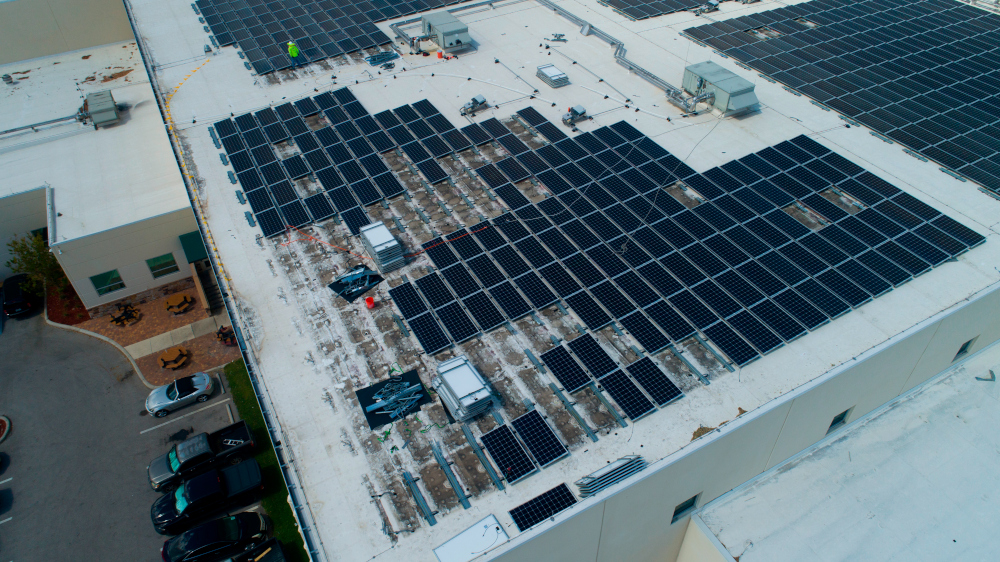Hurricane Ian, the fifth-strongest hurricane on record to make landfall in the contiguous United States, barreled across Florida in late September 2022. The Category 4 storm hit Fort Myers, Florida, particularly hard, contributing to over 125 deaths, mostly due to prolonged flooding.
Millions were without power, but a bright point came from Babcock Ranch, a 100% solar powered community outside Fort Myers that survived the hurricane mostly unscathed. The neighborhood made national news and showcased the strength and success of well-engineered solar projects when tested in the middle of an incredible natural catastrophe.
More solar projects successfully came out the other side of the storm after experiencing 155-mph winds. Florida solar company Advanced Green Technologies has been assessing the damage (if any) to its portfolio of projects in the Fort Myers area, and VP Clint Sockman talked to Solar Power World about what the team has seen.
Two AGT projects described here did experience some damage. Mercola Market in Cape Coral is a three-story health food store and office building that has a flat-roof array and a solar carport. The carport had no visible damage, but one corner of the flat-roof project had panel uplift. J.J. Taylor Distributing in Fort Myers is a beverage distribution warehouse that also had panel and rail uplift on one corner of its flat-roof array. The O&M team was able to isolate the damaged portions to keep the rest of the arrays producing power.
SPW: As a solar installer and post-construction maintenance provider, how do you react when extreme weather is announced in the area?
Stockman: We try to get an email out ahead of the storm and let people know it’s coming. It could be prudent to go ahead and power the system down and ride it out, depending on the severity of the storm. We suggest checking drains and other good practices if it’s a rooftop system to make sure nothing’s clogged. We’ll check in with the people who were under the direct path.
Two of our larger C&I projects took a direct hit — Mercola Market and J.J. Taylor Distributing. We emailed and called both of them. As soon as NOAA starts posting their satellite or aerial imagery, which they were very quick this year, we can start assessing damage virtually, literally the next day.
Once the storm passes, what do you do with damaged solar arrays under AGT’s care?
The first order of business is to always protect life safety and the safety of the building. We get up there and if there is any damage, we get things safe for everyday operation. Then we look into final repairs and getting it put back together, if needed. If the asset is fine, you still need to look at all your connections and terminations, inverters and enclosures. These events have an enormous amount of vibration. The carport at Mercola went unscathed — when you look at it, there’s nothing that happened. But as we started looking deeper, we had bolts that had vibrated loose and were clearly disengaged from their torque marks and mechanical settings. While they certainly took the punch, they couldn’t take it again if it wasn’t addressed.
While there were panels and rails damaged on the two flat-roof projects, I noticed that the roofing membrane itself had no damage.
Commercial roofing will typically fail as a perimeter breach or a window being breached and causing negative pressure to blow up from inside the building. These two buildings didn’t have any breaches to the perimeter. The solar projects were designed to modern code, either Miami-Dade or Florida code. We used enhanced fastening patterns and looked at the sheet metal details on the perimeters to prevent interior pressure failure.
A lot of the modern stuff that was designed to current building code fared pretty well. A lot of the more aged assets and at-risk assets really didn’t. The devil’s in the details. Good design typically will work — whether it’s roofing or solar.
What are the next steps for the Mercola and J.J. Taylor solar arrays?
J.J. Taylor was rebuilt from a prior catastrophe. It was new construction and the general contractor built [solar] and a Category 1 hurricane hit about four years ago and blew the entire thing off. We were hired to come in and rebuild. It performed obviously a lot better, but it still had that isolated corner pick up, and we lost about 40 modules out of a couple thousand. We’re looking at forensics on how those rooftop breaches happened. We don’t know if the prevailing winds were strongest from that corner, but it will be interesting to see.
The sections on the two arrays will be replaced. Both are minor in the grand scheme of the array. Most of the modules now are no longer commercially available, so that changes engineering. It’ll probably take a month or two to work through design and permitting. They’re both up and running at 90% capacity. We were able to simply take that inverter offline. The J.J. Taylor project was one inverter out of 30. That’s the great thing about redundant design and using modern string inverters. You’re able to take out a small portion of the array and keep the asset up and producing energy.
What will you take away from this hurricane event?
PanelClaw performed very well. We used PanelClaw racking systems on both projects. We have a lot of faith in their wind tunnel testing and their panel qualification. A lot of people will design racking systems and not make sure that the module has the frame strength that correlates to the racking system. You can’t treat them as individual components, it has to be an integrated system. We’ve stressed that a lot in the last 10 years, being in Florida and exposed to high winds.
Beyond that, it’s just being prepared for the storm and going through your annual maintenance. Both of these systems are under a preventative maintenance agreement. Our techs come out pre-hurricane season every year to inspect all the bolts for proper torque settings, inspect all the enclosures, preemptively getting in front of this. We’re in Florida. We’re exposed to what would be considered severe wind several times a year. A 70-mph heavy thunderstorm may not cause blow-off or severe damage, but it does put stress on the array and can cause things to come loose. We’re really encouraging all our customers to look at preventative maintenance at least once a year.














I am glad those projects held together. I’d like to see more about how FPL fared. I’ve only seen one FPL project report and it was inaccurate, best I can tell. Babcock Ranch made out very well, but all the reports called it a solar powered community, intimating that they had their own solar farm. What I am hearing is that they are on FPL grid, drawing from the nearby solar by day and gas plants at night. No battery. I am glad the FPL array held up, as well as the grid. We have two FPL farms near my house and it has been interesting to watch the construction, even if they don’t supply our local co-op grid. I never before saw such robust concrete poles as they are hanging lines from. California could learn a thing or two from them on how to build a solar-augmented grid.
By the way, Kelly, I love the new look!
Thanks for the very good education : ).
Great construction application and redundancy, very informative, Solar Energy Innovations was looking for this type of info to better prepare for future construction. We will surely be looking at PanelClaw as an option for our future racking systems.